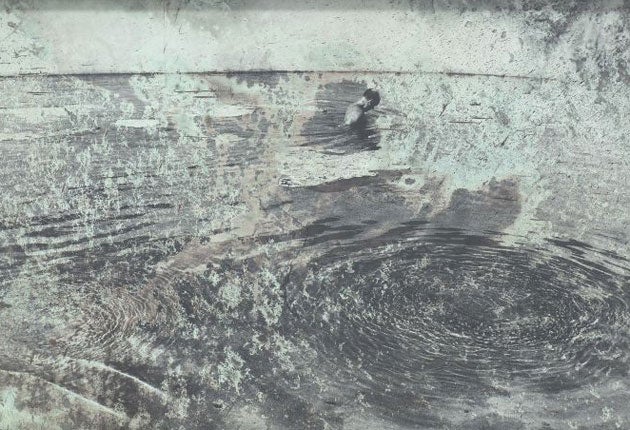Anselm Kiefer: Des Meeres und der Liebe, White Cube, Hoxton Square, London
A resolute appetite for destruction

Your support helps us to tell the story
From reproductive rights to climate change to Big Tech, The Independent is on the ground when the story is developing. Whether it's investigating the financials of Elon Musk's pro-Trump PAC or producing our latest documentary, 'The A Word', which shines a light on the American women fighting for reproductive rights, we know how important it is to parse out the facts from the messaging.
At such a critical moment in US history, we need reporters on the ground. Your donation allows us to keep sending journalists to speak to both sides of the story.
The Independent is trusted by Americans across the entire political spectrum. And unlike many other quality news outlets, we choose not to lock Americans out of our reporting and analysis with paywalls. We believe quality journalism should be available to everyone, paid for by those who can afford it.
Your support makes all the difference.We've been here before, earlier in the week, on all the world's television screens – giant, terrible, destructive seascapes, sublimity writ large... Here it is slightly different, of course. Anselm Kiefer's rectangular seascapes, glazed, framed in the sombrest of sombre blacks, are mounted 12 to a wall, facing each other; at the back of the room, there is yet another, even larger, which meets our eye as we enter. This one has the hulking wreck of a ship suspended from it, guns blazing, perfectly squared up, like a giant, stirring image fresh out of Boy's Own.
All these images (barring the one with the mounted ship) started their lives as photographs; we can see that at a glance. Then they were worked on, pulverized until they squealed. Now they look scarred, pitted, bruised, even burnt. The press release tells us that they have been subjected to electrolysis, which sounds very impressive and very 19th-century. I once asked Kiefer about the battered look of so many of his canvases. How did he achieve it? I leave them outside in the rain, he said, laughing. Kiefer laughs a lot. You wouldn't think so by looking at his work. There is such a weight of seriousness here. Everything is always so grave – in various senses.
We have come to expect Kiefer to be as he is in this gallery today, to overwhelm us with images of such size that there is some kind of emotional capitulation in front of them. Our knees buckle at their very presence. Sublimity! The heart knocks, falters. It is his signature: gigantism. Mahler is with us again. The tendency to heroicise one's own endeavours. Yes, only a museum could accommodate such works as these. Houses would collapse back to rubble at the very sight of them approaching the door. Would it be the same if they were scaled back to a quarter of this size?
This time (and, once again, as so often before) there are handwritten inscriptions, in German, across the faces of the canvases, which sometimes repeat the title of the entire show. It means "The Waves of Sea and Love", and it's a literary allusion. There are yet more literary allusions here and there, less unfamiliar ones – to Hero and Leander, that doomed couple who were much feted by poets. Kiefer draws inspiration from poets time and time again. Poetic references give paintings gravitas, nobility. They persuade us to believe that the artist has been thinking deeply.
Here these inscriptions are companioned by objects which adhere to the surfaces of the canvases, rather gruesome looking things – gynaecological instruments, we are informed. A giant set of calipers to wrest the unwilling child from the womb, a huge stethascope that could be a writhy, cyclops-eyed sea monster of sorts. They are making crab-like, pincering gestures. The human womb and the womb of the sea. That from which we come. That to which we return. We register the connection. We register the weight of these free-floating symbolic objects. We feel troubled by it all. We retreat from the gallery, head bowed, in boundless cogitation. Disappointingly, it is sunny outside, and a child is shrieking with pleasure in an untidy park.
To 9 April ( www.whitecube.com)
Join our commenting forum
Join thought-provoking conversations, follow other Independent readers and see their replies
Comments